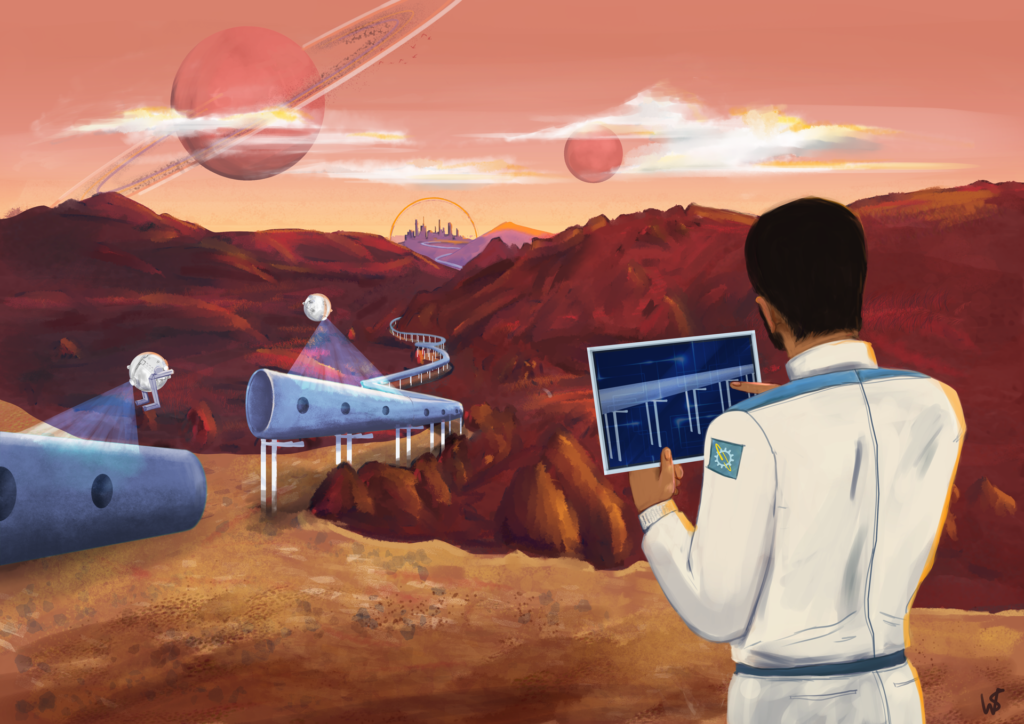People often complain that mankind is destroying the earth: that insatiable consumption and relentless production have laid waste to irreplaceable swaths of our planet, and that these activities have to stop or someday it will all be gone.
Which raises the question: What does it means to “destroy” something?
When you burn a log, the log is destroyed but heat, light, smoke, and ashes remain. It’s in that sense that physics tells us that matter is neither created nor destroyed. Similarly, cutting down a forest destroys the forest but in its place are houses and furniture and suburbs.
The real question is: Is it worth it?
Value Can Be Both Created and Destroyed
What people usually mean when they say mankind is destroying the earth is that human action causes a change they don’t like. It sounds odd to say that my wife, by eating a piece of toast for breakfast, is “destroying” the toast. But if I wanted that toast for myself, I might well regard her action as destructive. Same action, but the interpretation depends on purpose and context.
When a missile obliterates a building and kills the people in it, it may serve a political purpose even though the friends and family of those killed and the owners of the building are harmed. The perpetrator’s gain is the victim’s loss. In the political realm, one person’s gain is necessarily another person’s loss. You rob Peter to pay Paul; you kill Jack to appease Jill. It’s a “zero-sum game.”
In the economic realm, however, a thing is destroyed to the extent that it loses its usefulness to somebody for doing something. Someone may want to bulldoze my lovely home just for fun. If she pays me enough I may let her do it and be glad she did. When not physically coerced, a trade won’t happen unless each side expects to gain. If it does happen, and if the people who traded are right, then all do in fact gain. Each is better off than before. The trade has created something–value. If they are wrong they destroy value and suffer a loss, which gives them an incentive to avoid making mistakes.
Profits and Losses Help to Minimize the Destruction of Value
In free markets gains manifest themselves in profit, either monetary or psychic. (In the short run, of course, you can sustain a monetary loss if you think there’s a worthwhile nonmonetary aspect to the trade that will preserve the profit.) Now, the free market is not perfect, despite what some economics professors say about the benefits of so-called “perfect competition.” People don’t have complete or perfect knowledge and so they make mistakes. They trade when they shouldn’t, or they don’t trade when they should. Fortunately, profits and losses serve as feedback to guide their decisions.
There’s another source of market imperfection. People may be capable of making good decisions but they don’t trade, or trade too much, because the property rights to the things they would like to trade aren’t well-defined or aren’t effectively enforced. In such cases their actions or inactions create costs they don’t bear or benefits they don’t receive. The result is that their decisions end up destroying value.
If I free-ride off the oceans, if for example I don’t pay for dumping garbage into it, then the oceans will become more polluted than they should be. If there is a cleaner, more efficient source of energy than fossil fuels, but no one can profitably use it because the national government prevents anyone from doing so (for example by prohibitions or excessive taxation), then again the value that would have been created will never appear.
Aesthetics or Economics?
Our esthetic sense of beauty is part of what makes us human. If we wish to protect a lake or a valley from development because we think it beautiful, how do we do that?
To some extent it’s possible to do what the Nature Conservancy does, and purchase the land that we want to protect. But that’s not always possible, especially when the land is controlled not by private persons but by the national government, which makes special deals with crony capitalists in so-called public-private developments. In any case, even the free market is not perfect. Economic development and material well-being mean that some beautiful landscapes and irreplaceable resources will be changed in ways not everyone will approve.
Remember, though, that economics teaches us that an action is always taken by someone for something. There are no disembodied costs, benefits, and values. In a world of scarcity, John believes saving rain forests is more important than saving the whales. Mary believes the opposite. If we are to get past disagreements on esthetics–essentially differences of opinion–that can turn into violent conflict, we need to find some way to settle our differences peacefully, some way to transform them into value-creating interactions.
Imperfect though it may be, the free market has so far been the most effective method we know of for doing that.
Sanford Ikeda is an associate professor of economics at Purchase College, SUNY, and the author of The Dynamics of the Mixed Economy: Toward a Theory of Interventionism.
This article was published by The Foundation for Economic Education and may be freely distributed, subject to a Creative Commons Attribution United States License, which requires that credit be given to the author.
 “Happy New Years” by Ekaterinya Vladinakova
“Happy New Years” by Ekaterinya Vladinakova




